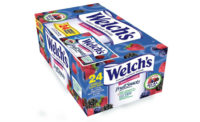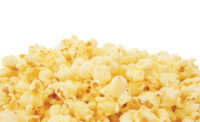Driven by consumer demand for more unique, interactive experiences, confectionery and snack product launches have grown globally by 17 percent over the last five years, Innova Market Insights reports.
The research firm also notes one in four global consumers increased their consumption of confectionery items over the past year because there is more variety and novelty available.
Consumer curiosity to discover something new and different is leading to more unusual and bolder flavors and blends, surprise textures and a greater focus on visual appeal in the sweets and snacks arena.
Heightened sensory delivery is also being increasingly combined with an element of the unexpected. As such, Innova Market Insights reports seeing activity in areas such as unusual colors, popping candy, hot and spicy options, cooling effects and more interactive, personalized packaging.
Snacking is no longer the optional extra, but the definitive occasion. Companies are focusing their new product development on trends such as bite-site formats and on-the-go options. There is a 20 percent growth in new snack launches with “bite-site” claim.
The three leading drivers of choice in snacks and confectionery remain flavor, cost and indulgence, with health considerations being lower down the pecking order in this segment. Confectionery remains an affordable everyday treat that is successfully building on opportunities around premiumization, sharing and gifting.
“In the light of rising health awareness, consumers are not necessarily reducing confectionery consumption levels,” Lu Ann Williams, director of innovation at Innova Market Insights, notes.
Even the move to plant-based eating has been seen in confectionery and snacks as brands “green up” their portfolios to attract consumers who want to add more plant-based options to their diets. Both categories are seeing more plant-based ingredients and flavors, with vegan-friendly positioning also increasingly in evidence.
The use of vegan-friendly claims for global confectionery and snacks NPD rose an average of 27 percent annually between 2014-2018, according to Innova Market Insights data. These launches now account for 6.6 percent of new launches in 2018, which is slightly higher than the 6.2 percent penetration level for food and drinks launches as a whole.









